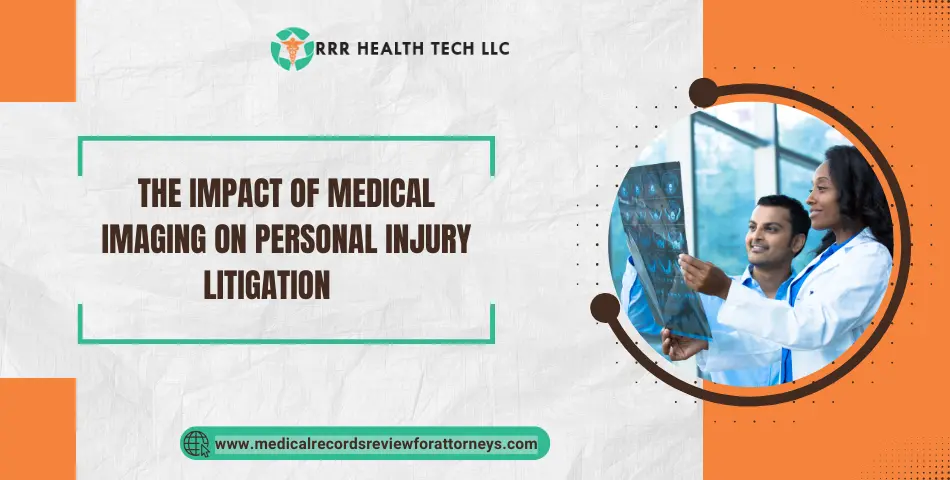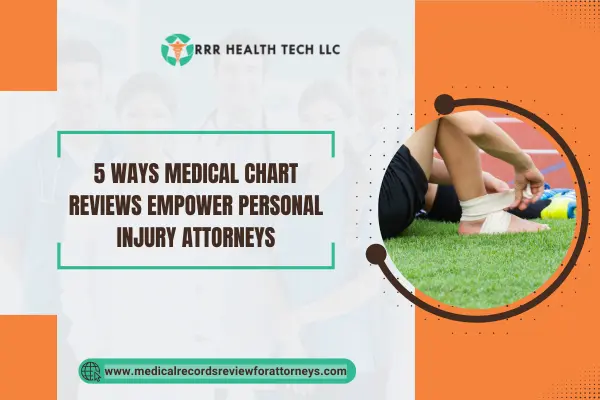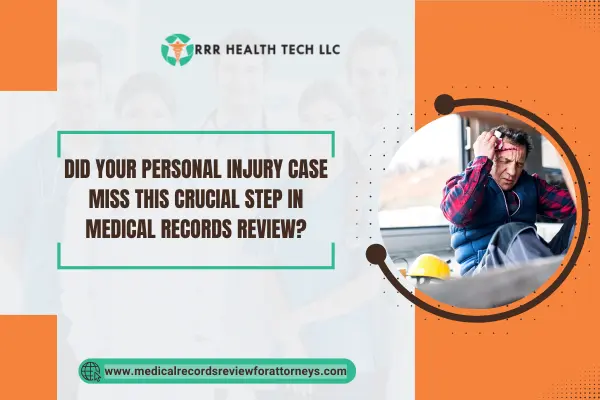
Medical imaging evidence reigns supreme in matters of personal injury litigation. X-rays, MRIs, and CT scans are among the most important pieces of evidence. These advanced medical imaging technologies render a clear picture of the injuries sustained during the accidents. As such, these diagnostic images do not just provide a picture but a deeper understanding of the severity of the harm done, enabling attorneys to strengthen their arguments.
Subsequent sections will describe the impact of medical imaging on personal injury litigation, its relevance in injury diagnosis, establishing causation, the severity of an injury, and legal measures after the injury.
The Power of Medical Imaging in Personal Injury Cases
Medical imaging has established a firm place in the realm of personal injury cases. Diagnostic images, including X-ray, MRI, and CT scans, give attorneys the ability to represent them with proven visual evidence that strengthens their client’s case. These images are a depiction of the harm and injuries sustained and can significantly boost the case’s credibility. For any injury sustained, be it a soft tissue injury, bone fracture, or internal trauma, medical imaging serves to make the attorney’s work of explanation about the degree of injury simple and precise.
How Medical Imaging Techniques Assist in Diagnosing and Documenting Injuries
The use of medical imaging is crucial in both the evaluation of injuries and the compiling of reports for legal cases. When injuries are very serious or are of a complicated nature, they may not be as easy to assess using normal examination methods. The examination of both apparent and non-apparent injuries using imaging ensures that no harm is left unchecked.
For instance, MRIs work perfectly for soft tissue injuries like torn muscles or ligaments, while X-rays and CT scans are typically used for broken bones or suspected internal bleeding. Medical imaging always serves a critical role in the diagnosis process and the classification of the injury, which forms the basis of legal documents.
The Impact of Visual Evidence on Injury Severity Representation in Court
Visual aids are often the most influential type of evidence in a courtroom. This is why most jurors or judges will respond better to evidence that has been presented concisely and clearly.
Medical images are an example of that. By using images like X-rays, MRIs, and CT scans, attorneys can depict the injuries sustained by their clients and how severe they might be. These images speak for themselves and further indicate the potential long-term effects that a client might suffer After all, seeing an x-ray of a broken bone is likely to provoke a stronger emotional response than simply being told about a medical injury.
Proving Causation: How Medical Imaging Links Injuries to Defendant’s Actions
In some cases, proving causation can be the most difficult, for instance in an injury claim, the plaintiff must show that an injury was caused because of the defendant’s reckless actions. This is where medical imaging comes into play.
By looking at the injury sustained, for example, the witness can often suggest how the accident was caused. When performing MRIs, doctors may be able to see a disc that herniated due to a car crash. Likewise, X-rays can capture the bone fractures that occur in a slip-and-fall accident. Using medical images provides a more robust claim to the jury of what actions perpetrated by the defendant caused the injuries in question.
Examining Pre-existing Conditions: The Importance of Comparative Analysis with Medical Images
‘Pre-existing conditions’ in personal injury cases always open the door to contests, as the defendant will claim that the plaintiff’s injuries stem from previous medical problems and not from the incident. As such, medical imaging can be quite useful in these situations.
This approach enables attorneys to demonstrate, with the help of images, that the plaintiff’s condition is a result of the incident or was worsened due to the incident. The same arguments can be made to support the idea that the defendant may have acted in a manner that aggravated or created an injury.
The Influence of Expert Testimony and Medical Imaging on Jury Understanding and Case Outcomes
Medical expert testimony is most often required in personal injury litigation, especially in medically complicated cases. Radiologists, for example, can provide expert testimony as to the relevance of the diagnostic images in the case and help the jury correlate them with the injuries sustained.
In a personal injury report, an expert witness can give a full description of the injuries, the importance of the images, and provide a professional opinion as to the cause and nature of the injury. During an injury case, this combination of expert testimony and medical imaging specifically aiding in the case can be crucial for plaintiffs hoping to achieve a better outcome.
Enhancing Settlement Negotiations Through Concrete Evidence from Medical Imaging
In most personal injury cases, there is no budging while dealing with the settlement negotiations. Useful and relevant supporting documents, such as medical pictures, are enough to motivate resolutions towards negotiations. It is common for defendants and/or insurance companies to discover that a plaintiff’s compelling medical evidence forces them to accept an amicable settlement as opposed to engaging in expensive and time-consuming litigation.
Medical imaging not only strengthens the argument in court but also provides strong bargaining power so that the unintended consequence of the client’s claims is taken seriously and compensated properly.
Future Implications of Advancements in Imaging Technology for Personal Injury Litigation
With unprecedented technological improvements, the medical imaging approach is improving as well. Advancements including three-dimensional imaging, improved MRIs, and functional imaging will also work to better the description of the injuries.
The integration of these technologies will increase the diagnostic capabilities making it easy to correlate injuries to incidents and improve the degree of injury assessment. The continued advancement of medical imaging technology will transform the personal injury legal field making it more effective and efficient.
Conclusion
Medical imaging has proven to be an important component in personal injury lawsuits. Medical images offer handsome returns to attorneys who can cinematically document injuries, and for settling negotiations. X-rays, MRIs, CT scans, and any other diagnostic imaging serve as objective visual proof of countless claims.
They are crucial for reinforcing the strategy and conveying the level of the injury. As practitioners enhance technologies in medical imaging, its impact on personal injury cases will undoubtedly grow and present more chances of winning the case for the plaintiffs.
FAQs
Why is medical image processing important?
Medical image processing is important for the correct interpretation and analysis of images. It enables the improvement of their quality while focusing on the important features that serve as supporting material for making a diagnosis and for legal claims.
Why is medical imaging important?
Medical imaging is important because it gives solid proof of the injuries or medical conditions that a person is suffering from. It helps attorneys systematically prove injuries and causation subjectively for personal injury cases.
What is the purpose of diagnostic imaging?
To develop visual impressions of the body’s internal structure so that any injuries, diseases, or anomalies can be found in the purpose of diagnostic imaging. In personal injury cases, diagnostic imaging helps establish the extent of injuries and their relationship to the accident.
How do medical images work?
Medical imaging is done by using several imaging modalities such as X-rays, MRIs, and CT scans to picture in detail the internal parts of the body. These pictures are then compared and evaluated by medical and legal professionals to determine the extent of injuries, the condition, and the effects of the accidents.
What is the use of medical images?
Medical images are used to outline and document an ailment. In cases of personal injuries, such images are used to prove the claims and validate them in court.
If you are involved in a personal injury case and need medical imaging for your legal claims, we at RRR Health Tech are ready to assist you. We provide thorough medical imaging analysis to attorneys for their cases. Give us a call today for details on how we can aid you in your personal injury litigation.


